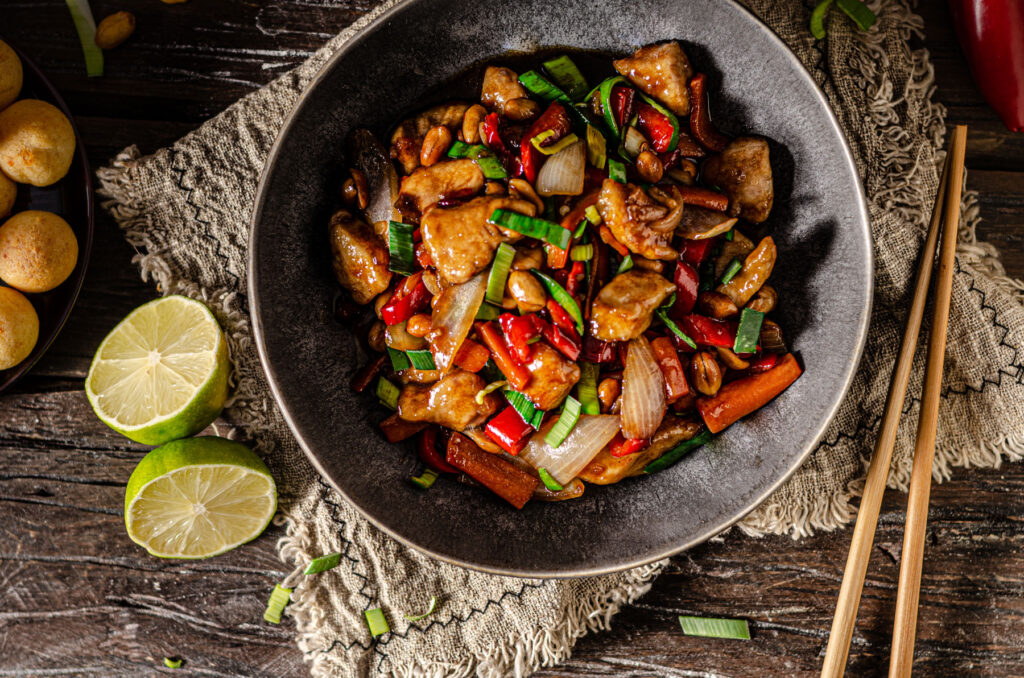Chinese food is a beloved cuisine around the globe. But many people wonder, is Chinese food healthy? This question encompasses various factors, including ingredients, cooking methods, and portion sizes. In this article, we will explore the nutritional aspects of Chinese cuisine, distinguish between healthier and less healthy options, and provide tips to enjoy Chinese food without compromising your health.
Understanding Chinese Cuisine
Chinese cuisine is incredibly diverse, varying significantly from region to region. From the spicy dishes of Sichuan to the delicate flavors of Cantonese food, the ingredients and cooking techniques can differ widely. Here’s a brief overview of common characteristics:
| Region | Common Ingredients | Cooking Methods |
|---|---|---|
| Cantonese | Rice, seafood, vegetables | Stir-frying, steaming |
| Sichuan | Chili peppers, garlic, ginger | Stir-frying, braising |
| Hunan | Smoked meats, pickled vegetables | Steaming, frying |
| Northern | Wheat-based dishes (noodles) | Boiling, frying |
| Southern | Rice, fresh produce | Stir-frying, grilling |
Key Ingredients in Chinese Food
- Rice and Noodles: Staples that provide carbohydrates.
- Vegetables: Often stir-fried or steamed, they add fiber and vitamins.
- Proteins: Include chicken, beef, pork, tofu, and seafood.
- Sauces: Soy sauce, oyster sauce, and hoisin sauce can add flavor but also sodium.
Nutritional Value of Chinese Food
1. High in Vegetables
Many Chinese dishes are rich in vegetables, contributing to a higher intake of vitamins, minerals, and fiber. Vegetables like bok choy, broccoli, and snow peas are common and beneficial for health.
2. Protein Sources
Chinese cuisine often incorporates lean proteins such as chicken, fish, and tofu. These proteins are essential for muscle repair and overall health.
3. Cooking Methods Matter
Cooking methods significantly influence the healthiness of a dish. Here’s how various methods stack up:
| Cooking Method | Healthiness Level | Notes |
|---|---|---|
| Steaming | High | Retains nutrients and flavor |
| Stir-frying | Medium | Can be healthy if done with minimal oil |
| Deep-frying | Low | High in unhealthy fats |
| Boiling | Medium | Retains nutrients but can lose flavor |
4. Potential Downsides
While many dishes can be healthy, some typical Chinese food items may be high in sodium, sugar, and unhealthy fats. Examples include:
- Sweet and Sour Pork: Often contains high amounts of sugar.
- General Tso’s Chicken: Usually deep-fried and coated in sugary sauce.
- Egg Rolls: Typically fried, adding unhealthy fats.
Is Chinese Food Healthy? A Balanced View
Pros of Chinese Food
- Diverse Nutritional Profile: Many dishes contain a balance of carbohydrates, proteins, and healthy fats.
- Rich in Antioxidants: Ingredients like garlic and ginger have antioxidant properties that can promote overall health.
- Portion Control: Typically served family-style, encouraging shared portions can help control intake.
Cons of Chinese Food
- High Sodium Content: Many dishes contain soy sauce and other salty ingredients.
- Deep-Fried Options: Favorites like spring rolls and fried rice can be high in unhealthy fats.
- High Caloric Density: Some dishes may be calorie-dense, contributing to weight gain if consumed in excess.
Making Healthier Choices
Healthier Alternatives
When ordering or preparing Chinese food, consider these healthier alternatives:
| Dish Type | Healthier Options |
|---|---|
| Appetizers | Steamed dumplings instead of fried |
| Main Courses | Stir-fried vegetables with tofu |
| Rice & Noodles | Brown rice or whole grain noodles |
| Sauces | Low-sodium soy sauce or homemade sauce |
Tips for Eating Healthy Chinese Food
- Choose Steamed Over Fried: Opt for steamed dumplings and vegetables.
- Ask for Less Sauce: Request dishes with less sauce or on the side.
- Go for Brown Rice: Substitute white rice for brown to increase fiber intake.
- Load Up on Veggies: Choose dishes that are vegetable-heavy.
- Watch Your Portions: Share dishes or take leftovers home.
Real-Life Examples
Healthy Chinese Meal
Imagine ordering a meal at a local Chinese restaurant. You decide on:
- Appetizer: Steamed dumplings
- Main Course: Kung Pao chicken (with extra vegetables, light sauce)
- Side: Brown rice
- Dessert: Fresh fruit
This meal is balanced, incorporating lean protein, whole grains, and plenty of vegetables.
Personal Experience
Many people report feeling good after enjoying a Chinese meal that prioritizes health. A recent survey showed that individuals who chose healthier options felt more satisfied and less bloated than those indulging in heavier, fried dishes.
Is Chinese Food Healthy for Weight Loss?
When considering whether Chinese food is healthy for weight loss, it largely depends on the choices you make from the menu. Traditional Chinese cuisine offers a variety of dishes that can support your weight loss journey.Key Factors to Consider:
- Vegetable-Rich Dishes: Many Chinese meals are packed with vegetables, which are low in calories but high in fiber. Dishes like stir-fried mixed vegetables can fill you up without adding excessive calories.
- Lean Proteins: Opt for dishes that feature lean proteins, such as chicken, shrimp, or tofu. These proteins can help you feel satisfied and maintain muscle mass while losing weight.
- Cooking Methods: Choose healthier cooking methods like steaming or stir-frying with minimal oil. Avoid deep-fried options, which can add unnecessary calories and unhealthy fats.
- Portion Control: Chinese meals are often served family-style, making it easy to share and control portions. This can help prevent overeating.
- Limit Sauces: Many sauces are high in sugar and sodium. Requesting lighter sauces or using them sparingly can make your meal healthier.
By making informed choices, you can enjoy Chinese food while supporting your weight loss efforts!
Is Chinese Food Healthy for Diabetics?
Chinese food can be suitable for diabetics with careful choices. Opt for dishes rich in vegetables and lean proteins, like steamed chicken with broccoli or tofu stir-fry. Choose brown rice over white for better fiber content, which helps regulate blood sugar. Be cautious with sauces, as many can be high in sugar and sodium. Avoid fried items and large portions to maintain stable blood sugar levels. With mindful selections, diabetics can enjoy the flavors of Chinese cuisine healthily!
Conclusion: Is Chinese Food Healthy?
In summary, the question is Chinese food healthy depends largely on what you choose to order or prepare. With an array of ingredients and cooking methods, there are plenty of opportunities to enjoy this vibrant cuisine in a nutritious way.
By being mindful of your choices—favoring vegetables, lean proteins, and healthier cooking methods—you can savor the flavors of Chinese food while supporting your health. Embrace the diversity of flavors and textures that Chinese cuisine has to offer, and remember that moderation is key.
Final Thoughts
Ultimately, enjoying Chinese food can be a healthy part of your diet. Just remember to make informed choices and savor every bite. Whether you’re dining out or cooking at home, there’s a world of healthy Chinese dishes waiting for you to discover.
By focusing on the health aspects and offering practical tips, we can appreciate Chinese cuisine’s rich flavors without compromising our health. So the next time someone asks, is Chinese food healthy, you can confidently share your knowledge!


